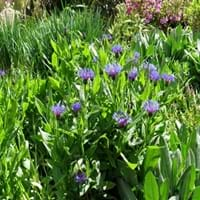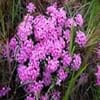Life Span
Perennial
Annual and Perennial
Type
Broadleaf Evergreen
Flowering Plants, Shrubs
Origin
Australia
World/Pandemic, North America, Europe, Russia/Siberia, China, Korea
Types
Bigleaf hydrangea, Hortensia, Smooth hydrangea, Oakleaf hydrangea, Annabelle
Bigleaf hydrangea, Hortensia, Smooth hydrangea, Oakleaf hydrangea, Annabelle
Habitat
Forest edges, Hillside, Woods
Forest edges, Hillside, Woods
USDA Hardiness Zone
9-15
2-11
AHS Heat Zone
Not Available
7 - 1
Sunset Zone
21,22
Not Available
Habit
Weeping
Upright/Erect
Flower Color
Red
Blue, Sky Blue, Indigo, Dark Blue
Flower Color Modifier
Bicolor
Bicolor
Fruit Color
Brown
Brown, Sandy Brown
Leaf Color in Spring
Light Green, Bronze
Sea Green, Gray Green
Leaf Color in Summer
Light Green
Sea Green, Gray Green
Leaf Color in Fall
Light Green
Sea Green, Gray Green
Leaf Color in Winter
Light Green
Light Green
Leaf Shape
Oblovate
Oblovate
Plant Season
Spring, Summer, Fall, Winter
Spring, Summer, Fall
Sunlight
Full Sun
Full Sun, Partial Sun
Growth Rate
Medium
Very Fast
Type of Soil
Loam, Sand
Loam, Sand
The pH of Soil
Acidic, Neutral
Acidic, Neutral, Alkaline
Soil Drainage
Well drained
Well drained
Bloom Time
Late Spring, Early Summer, Summer, Indeterminate
Indeterminate
Tolerances
Pollution, Drought
Drought
Where to Plant?
Container, Ground
Container, Ground, Pot
How to Plant?
Seedlings, Stem Planting
Seedlings
Plant Maintenance
Medium
Medium
Watering Requirements
Not Available
Keep ground moist, Requires a lot of watering, Requires regular watering, Requires watering in the growing season
In Summer
Drought Tolerant
Lots of watering
In Spring
Moderate
Moderate
In Winter
Average Water
Average Water
Soil pH
Acidic, Neutral
Slightly Acidic
Soil Type
Loam, Sand
Loamy
Soil Drainage Capacity
Well drained
Loamy
Sun Exposure
Full Sun
Full Sun
Pruning
Remove damaged leaves, Remove dead branches, Remove dead leaves
Prune to control growth, Remove damaged leaves, Remove dead branches, Remove dead leaves
Fertilizers
All-Purpose Liquid Fertilizer
Compost
Pests and Diseases
Red blotch
Bacterial leaf spot, Botrytis Blight, Leafminers, Mealybugs, Mushroom root rot
Plant Tolerance
Pollution, Drought
Drought
Flower Petal Number
Single
Single
Foliage Texture
Fine
Medium
Foliage Sheen
Matte
Matte
Attracts
Bees, Flies
Butterflies
Allergy
Chest tightness, Diarrhea, Dizziness, Nausea, Vomiting
Chest tightness, Diarrhea, Dizziness, Nausea, Vomiting
Aesthetic Uses
Not Available
Beautification, Bouquets, Landscape Designing, Showy Purposes
Beauty Benefits
Not Available
Not Available
Edible Uses
Not Available
Yes
Environmental Uses
Air purification
Air purification, Food for insects, Indoor Air Purification, Prevent Soil Erosion, Very little waste
Medicinal Uses
Fever, Kidney problems, Urinary tract problems
Fever, Kidney problems, Urinary tract problems
Part of Plant Used
Flowers, Root
Flowers, Root
Other Uses
Not Available
Can be made into a herbal tea, Decoration Purposes, Employed in herbal medicine, Showy Purposes, Used as Ornamental plant, Used for its medicinal properties
Used As Indoor Plant
Not Available
Yes
Used As Outdoor Plant
Yes
Yes
Garden Design
Container, Feature Plant, Foundation, Hedges, Mixed Border, Screening, Wind Break
Container, Herb
Botanical Name
CALLISTEMON viminalis
CENTAUREA cyanus
Common Name
Weeping Bottlebrush
Batchelor's Buttons, Cornflower
In Hindi
Hydrangea
Hydrangea
In German
Hortensie
Hortensie
In French
Hortensia
Hortensia
In Spanish
Hortensia
Hortensia
In Greek
υδραγεία
υδραγεία
In Portuguese
Hortênsia
Hortênsia
In Polish
Hortensja
Hortensja
In Latin
Hibiscus
Hibiscus
Phylum
Not Available
Anthophyta
Class
Not Available
Magnoliopsida
Order
Not Available
Asterales
Family
Myrtaceae
Asteraceae
Genus
Not Available
Centaurea
Clade
Not Available
Angiosperms, Asterids, Eudicots
Tribe
Not Available
Cynareae
Subfamily
Not Available
Carduoideae
Number of Species
Not Available
Not Available
Properties of Weeping Bottlebrush and Cornflower
Wondering what are the properties of Weeping Bottlebrush and Cornflower? We provide you with everything About Weeping Bottlebrush and Cornflower. Weeping Bottlebrush doesn't have thorns and Cornflower doesn't have thorns. Also Weeping Bottlebrush does not have fragrant flowers. Weeping Bottlebrush has allergic reactions like Chest tightness, Diarrhea, Dizziness, Nausea and Vomiting and Cornflower has allergic reactions like Chest tightness, Diarrhea, Dizziness, Nausea and Vomiting. Compare all the properties and characteristics of these two plants. Find out which of these plant can be used as indoor plant. If you are interested to decorate your house and garden, find out aesthetic uses, compare them and select the plant which will beautify your surrounding. Along with beautification, try comparing medicinal and edible uses of Weeping Bottlebrush and Cornflower and you can choose the plant having best and most benefits.
Season and Care of Weeping Bottlebrush and Cornflower
Season and care of Weeping Bottlebrush and Cornflower is important to know. While considering everything about Weeping Bottlebrush and Cornflower Care, growing season is an essential factor. Weeping Bottlebrush season is Spring, Summer, Fall and Winter and Cornflower season is Spring, Summer, Fall and Winter. The type of soil for Weeping Bottlebrush is Loam, Sand and for Cornflower is Loam, Sand while the PH of soil for Weeping Bottlebrush is Acidic, Neutral and for Cornflower is Acidic, Neutral, Alkaline.
Weeping Bottlebrush and Cornflower Physical Information
Weeping Bottlebrush and Cornflower physical information is very important for comparison. Weeping Bottlebrush height is 500.00 cm and width 260.00 cm whereas Cornflower height is 30.00 cm and width 30.00 cm. The color specification of Weeping Bottlebrush and Cornflower are as follows:
Weeping Bottlebrush flower color: Red
Weeping Bottlebrush leaf color: Light Green and Bronze
Cornflower flower color: Blue, Sky Blue, Indigo and Dark Blue
- Cornflower leaf color: Sea Green and Gray Green
Care of Weeping Bottlebrush and Cornflower
Care of Weeping Bottlebrush and Cornflower include pruning, fertilizers, watering etc. Weeping Bottlebrush pruning is done Remove damaged leaves, Remove dead branches and Remove dead leaves and Cornflower pruning is done Prune to control growth, Remove damaged leaves, Remove dead branches and Remove dead leaves. In summer Weeping Bottlebrush needs Drought Tolerant and in winter, it needs Average Water. Whereas, in summer Cornflower needs Lots of watering and in winter, it needs Average Water.


